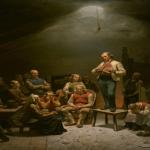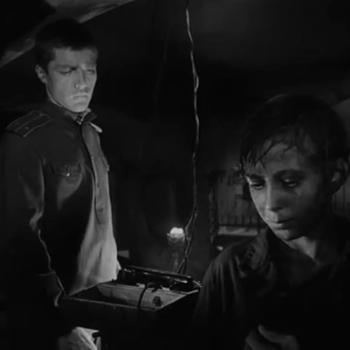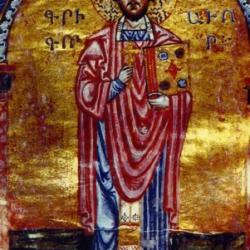Sadly, because of the untowardly symbiotic relationship between Trump and the media covering him, many newsworthy stories remain untold or relegated to the back pages. One of these concerns the situation of the Orthodox Church in Ukraine today.
It is a complicated story, but the gist is this: many in Ukraine are clamoring that a single autocephalous (self-standing, independent) Orthodox church be formed from the three divided churches that currently exist in the former Soviet Republic: the Ukrainian Orthodox Church of the Kyivan Patriarchate, the Ukrainian Orthodox Church (Moscow Patriarchate), and the Ukrainian Autocephalous Orthodox Church.
The proponents for single autocephaly have appealed to the Patriarch of Constantinople, who has sided with their cause. But the Patriarch is no pope, but merely a first among equals, and his position has provoked the ire of the Moscow Patriarchate, which has tended to see Ukraine as a (very large) fiefdom under its ecclesial jurisdiction. The result is a complicated, ecclesial mess that has raised the possibility of a permanent schism between Constantinople (Istanbul) and Moscow. Furthermore, because of Putin’s/Russia’s political interests in Ukraine—remember the recent annexation of Crimea and the current war in Ukraine’s eastern parts?—the church dust-up has worrisome geopolitical implications as well.
Here is how a piece in the New York Times from October 19 characterized the situation:
Russia’s effort to keep Ukraine under its thumb prompted a revolution in 2014 and a war that has claimed more than 10,000 lives. It also prompted, on Monday, what may be one of the most serious splits in Christendom since the Great Schism between Rome and Constantinople in 1054 and the Protestant Reformation 500 years ago. This new crisis has deep historical roots, and could shape religious and secular ties among many countries for years to come.
Here’s what happened: The Church of Russia announced this week that it was breaking ties with the Ecumenical Patriarchate of Constantinople, which has primacy in Orthodoxy and which has decided to give autonomy to the Ukrainian Orthodox Church. This decision stems directly from Moscow’s annexation of Crimea and its support for separatist rebels in eastern Ukraine, although Ukrainians had long been unhappy about their church remaining subordinate to Russia’s, as it had been since 1686. This year, their president, Parliament and religious leaders petitioned the leader of the Constantinople Patriarchate, Bartholomew, to grant their church independence — or autocephaly, as it is known in the church.
These developments will have serious implications within Ukraine. Its mostly Orthodox population is divided among three main churches; the newly independent Ukrainian Orthodox Church of the Kiev Patriarchate would gain influence and most likely seek to take over houses of worship and other property from the church under Moscow’s jurisdiction, which, until now, was the largest in Ukraine and the only one recognized by other churches.
This will further strain relations between Ukraine and Russia. Also, the break in relations between Moscow and the Ecumenical Patriarchate could weaken the latter if other Orthodox churches follow Russia in rejecting Constantinople’s primacy. The shock waves would affect relations between churches that find themselves on either side of the divide, forcing them, too, to sever ties . . .
Like I said, the situation is complicated, and the author of the piece, one Nikos Konstandandaras from Greece, has a decidedly anti-Russian point of view.
Recently, I hosted a public conversation with my colleague at Valparaiaso University, Nicholas Denysenko, who, in timely fashion, has just published a book, The Orthodox Church in Ukraine: A Century of Separation (Northern Illinois University Press, 2018). Dr. Denysenko is a first- generation son of immigrants from Ukraine and a veteran scholar of Orthodoxy. He knows his stuff, in short, and we had an informative conversation. To get a grip on what’s going in Ukraine (and especially its historical background), therefore, I highly recommend the book. Here is the dust-jacket description:
The bitter separation of Ukraine’s Orthodox churches is a microcosm of its societal strife. From 1917 onward, church leaders failed to agree on the church’s mission in the twentieth century. The core issues of dispute were establishing independence from the Russian church and adopting Ukrainian as the language of worship. Decades of polemical exchanges and public statements by leaders of the separated churches contributed to the formation of their distinct identities and sharpened the friction amongst their respective supporters.
In The Orthodox Church in Ukraine, Nicholas Denysenko provides a balanced and comprehensive analysis of this history from the early twentieth century to the present. Based on extensive archival research, Denysenko’s study examines the dynamics of church and state that complicate attempts to restore an authentic Ukrainian religious identity in the contemporary Orthodox churches. An enhanced understanding of these separate identities and how they were forged could prove to be an important tool for resolving contemporary religious differences and revising ecclesial policies. This important study will be of interest to historians of the church, specialists of former Soviet countries, and general readers interested in the history of the Orthodox Church.
And stay tuned to the actual situation in Ukraine. Developments promise to occur rapidly.













